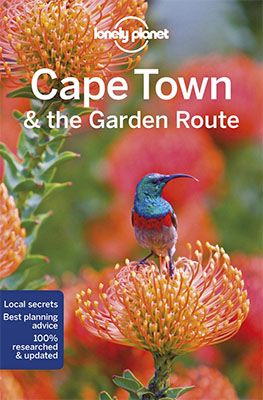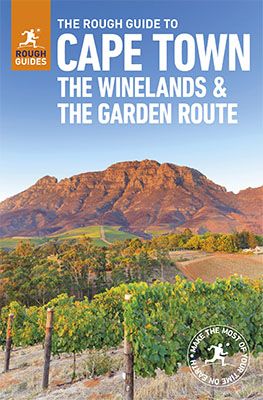Cape Town, South Africa’s multifaceted Mother City
Cape Town, South Africa’s multifaceted Mother City
Bustling Cape Town is one of the most popular tourist destinations in all of South Africa. This is partly due to the wonderful Mediterranean climate but also thanks to its beautiful natural surroundings. The city is also known for its relaxed atmosphere, its harbour and its numerous, very interesting sights.
The large metropolis has a fairly small but cosy city centre where you can have a great time. However, it is mainly the sights just outside the city that make Cape Town such a fantastic destination, such as Table Mountain, the Cape of Good Hope, the Cape wineries and the many, unprecedentedly beautiful hiking trails through rugged nature.
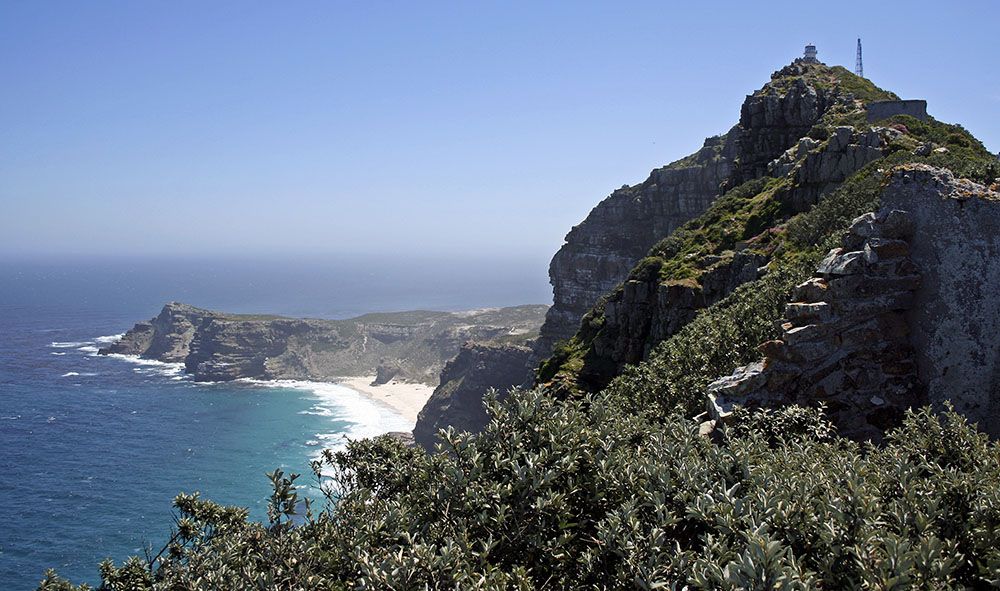
Capital’s Brief History
The area that is now called the Western Cape has been inhabited for over 100,000 years. Europeans first set foot ashore in the 15th century. It was the Portuguese who bought drinking water here on their way to Southeast Asia. They also traded meat from the Khoi Khoi and San tribes. However, the Cape was not appealing enough for them to build a settlement there. Cape Town did not come into being until 1652, when the Dutch East India Company established a trading post there.
Because of the climate, European crops could be grown here quite easily. Therefore, the Dutch did not only build a fort, they also permitted colonists (Dutch, Germans and Huguenots) with a licence to make a living as farmers. In time, these colonists explored the adjoining hinterland and founded other towns. At the end of the 18th century the powerful Dutch East India Company went bankrupt. Soon afterwards, the British conquered Cape Town and the Cape Colony, and the original settlers – the Boers – moved further into the hinterland.
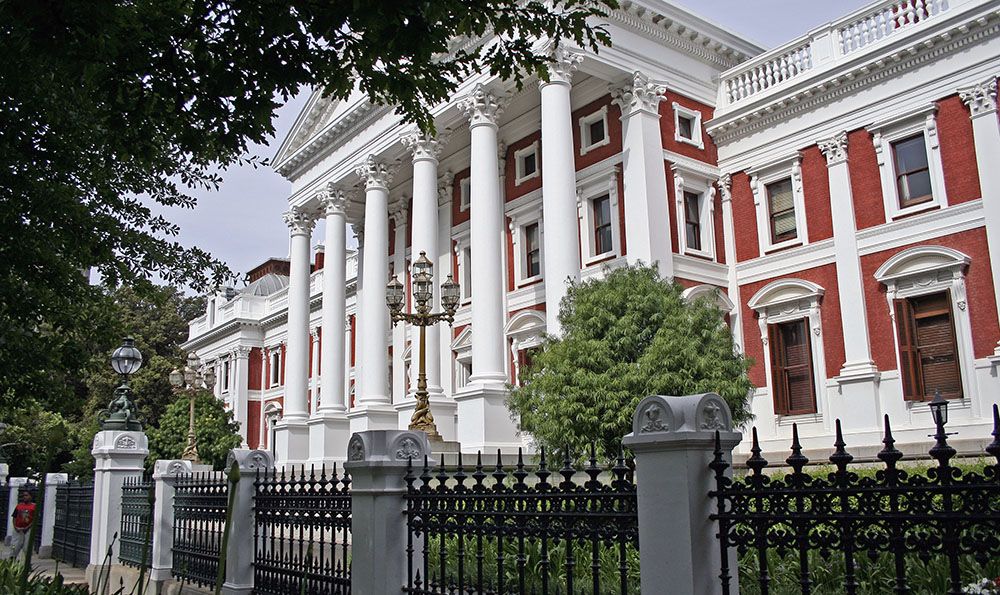
Must-sees in the city centre of Cape Town
It is a good idea to take a guided bike tour on your first day in Cape Town. This way, you’ll get to know your way around the city and see the best spots. We always book our bicycle tour with Baja Bikes. You get an excellent guide who really knows everything about the city. The guide speaks English, though he also speaks Afrikaans. In addition, they provide you with good material and a wonderful, safe route through the city.
Below are some of the sights that you should not miss during your visit to the city centre of Cape Town. A number of these will also be visited during the bike tour. Do you have extra time to spend in Cape Town and are you curious what else there is to do? Then drop in at one of the tourist information offices located in various districts (V&A Waterfront, City Bowl, Groenpunt, etc).
Coloured houses in Bo-Kaap (the Malaysian quarter)
This hilly district is where Malay descendants of slaves traditionally lived. It is a popular photo and film location because of its colourful buildings, mosques and picturesque streets. It also offers a beautiful view of Cape Town. First stroll through the district for an hour and finish with a visit to the Bo-Kaap Museum. This museum shows the life of a rich Malaysian family in the 19th century.
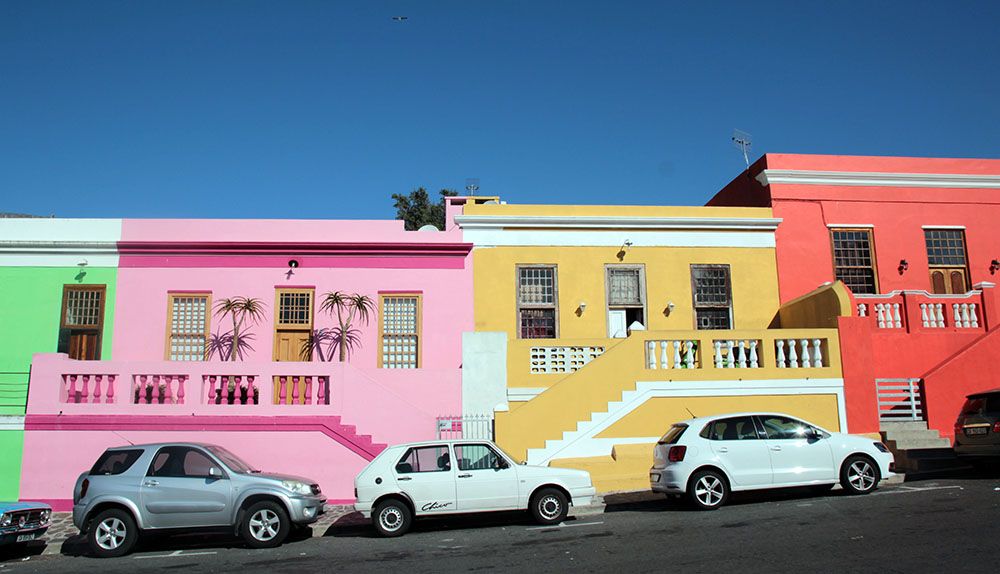
The Castle of Good Hope
This pentagonal fortress from the mid-17th century is the oldest existing building in South Africa. Thanks to the placement of bastions at each of the five corners, the fort was virtually impossible to capture at the time. It therefore served as an example for the many other forts built by the Dutch. Not only in their own country (like Naarden-Vesting) but also in other colonies. Inside the castle, you have several buildings and a large number of historical military equipment and tools. There is also an art collection and the William Fehr Collection of antique Cape Dutch furniture.
Victoria and Alfred Waterfront
A city break to Cape Town is not complete without a visit to the Victoria and Alfred (V&A) Waterfront: a 123-hectare shopping area in the harbour. It is very popular with tourists, because of the many restaurants and attractions. You will find, for example, the Aquarium or the Marine Museum. Port tours and trips to Robben Island depart from here, as do helicopter flights to the Cape Peninsula.
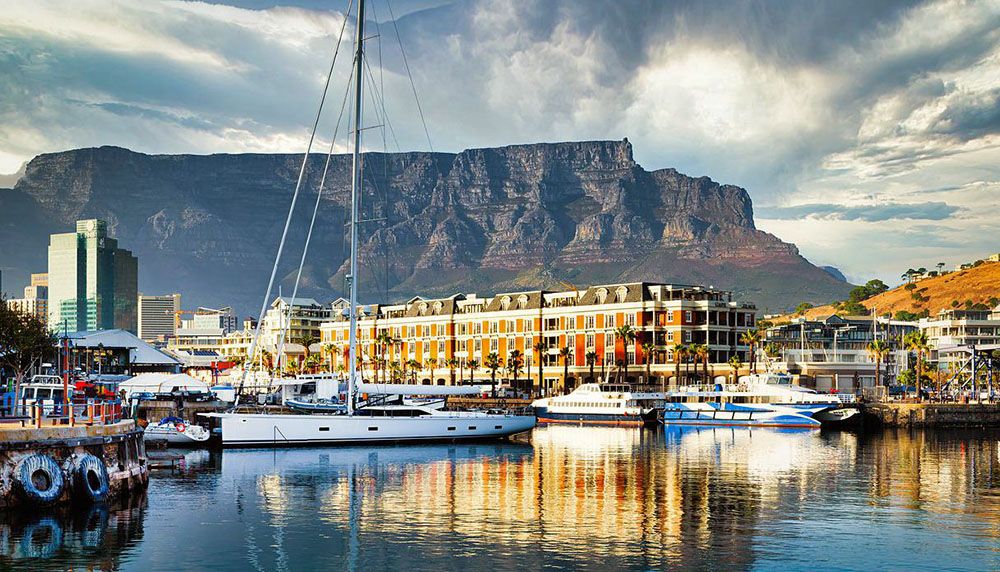
The Town Hall
In the mid-18th century, the forerunner of the City Hall was built at the current Greenmarket Square. It first housed the civic guard, later serving as a police court. It was not until the middle of the 19th century that the beautiful building was given the function of town hall, which was only finally completed in 1905. It is an important historical building, partly because Nelson Mandela gave his first speech there after his release. Nowadays, it is no longer the town hall. However, exhibitions and orchestral performances are held there.
National Botanical Gardens Kirstenbosch
This is one of the most beautiful botanical gardens in the world. You will find beautiful and very diverse flowers and plants of the Cape but also special plants from other South African bioregions. Like the enormous baobab. The garden is also special because it changes dramatically every season. You will see different birds, new flowers, and so on. At certain times of the year, there are concerts and performances in the open-air amphitheatre. In the summer, these sometimes take place at sunset.
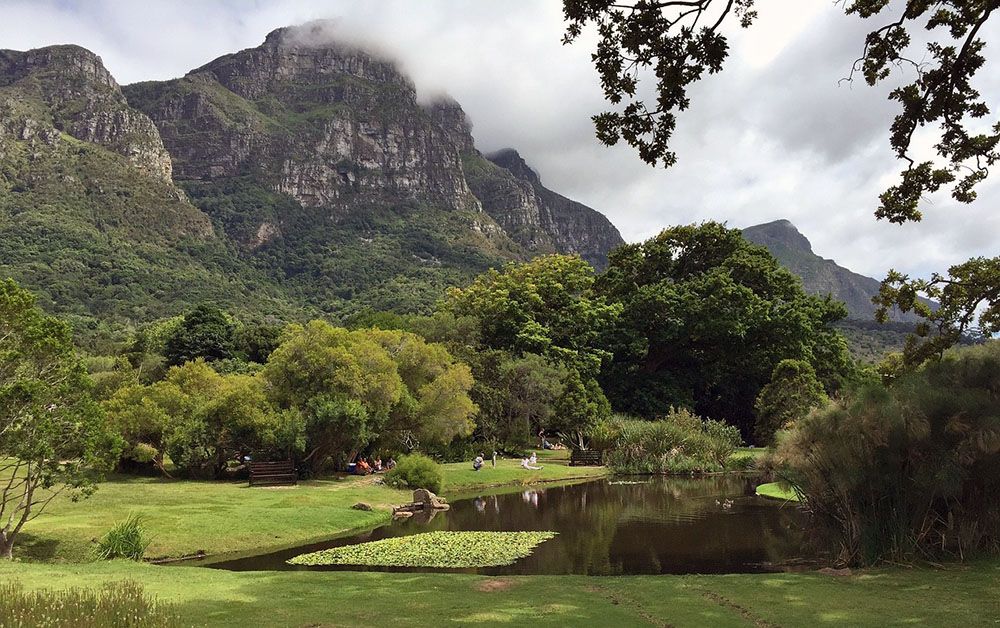
Greenmarket Square
Greenmarket Square is a lively market for African crafts. The vendors come from all over Africa, including Malawi, Mozambique and Zimbabwe. Thanks to the immigrants who come to South Africa in search of a better life, you will find handicrafts from different countries and cultures here. The cobbled public market is one of the oldest in South Africa and originally functioned as a slave market. Greenmarket is a great place to find some unique and authentic curiosities and jewellery. Great as a souvenir for home!
The beaches at Clifton
Clifton Beach is a pearl among the many beaches near Cape Town. It’s actually four beaches separated by granite boulders. Go here for sun, sea and sand. But also for the beautiful, wide view of the Atlantic Ocean. This is also the place to be for the perfect sunset. Thanks to its sheltered location from the wind, it is usually wonderfully warm.
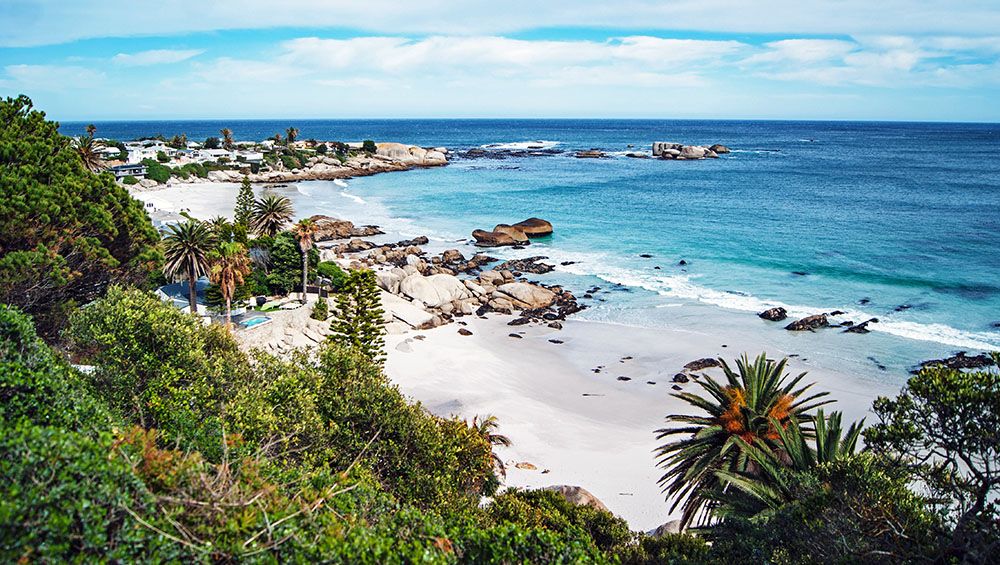
The Old Biscuit Mill
The Old Biscuit Mill was a biscuit factory in the 19th century that started out as a mill. Nowadays, the various buildings form a lively centre of art, design, shops and the most delicious eateries. The Old Biscuit Mill is really hip and happening. On weekdays, you will find entrepreneurs, artists, hipsters, fashionistas and other hip people from all over the world here. But the live performances really bring the whole mill to life. This is especially so at weekends, when visitors from all walks of life flock here to shop in the artisan and designer shops.
Lion’s Head
The Lion’s Head is a 669-metre high mountain with a magnificent 360-degree view. The sunsets here are phenomenal. Also during the day, the walk to the top is a favourite among both residents and tourists. It is a relatively short walk of about two to three hours, which winds around the mountain. On the way, you already get fantastic views but the view at the top is unsurpassed.
Visit to some of the many interesting museums
In the centre of Cape Town, there are many museums that are definitely worth a visit. One of them is the District Six Museum. The museum is about the district that remained multiracial until well into the sixties. The government wanted to combat this by evicting all residents.
Another museum is the Slave Lodge in one of the oldest buildings in Cape Town. The social history of the city is housed here. Additionally, you shouldn’t miss out on the South African Jewish Museum. The museum is about the little Jew who made a great contribution to South African society. She also had a role in bringing down Apartheid.
The last two museums we will mention here are the Maritime Centre and the Zeitz Museum of Contemporary African Art (MOCAA). The Maritime Centre tells the story of the early sailors who travelled around the Cape of Good Hope. The MOCAA is the largest museum of contemporary African art in the world. The museum is located in an old, large grain silo.
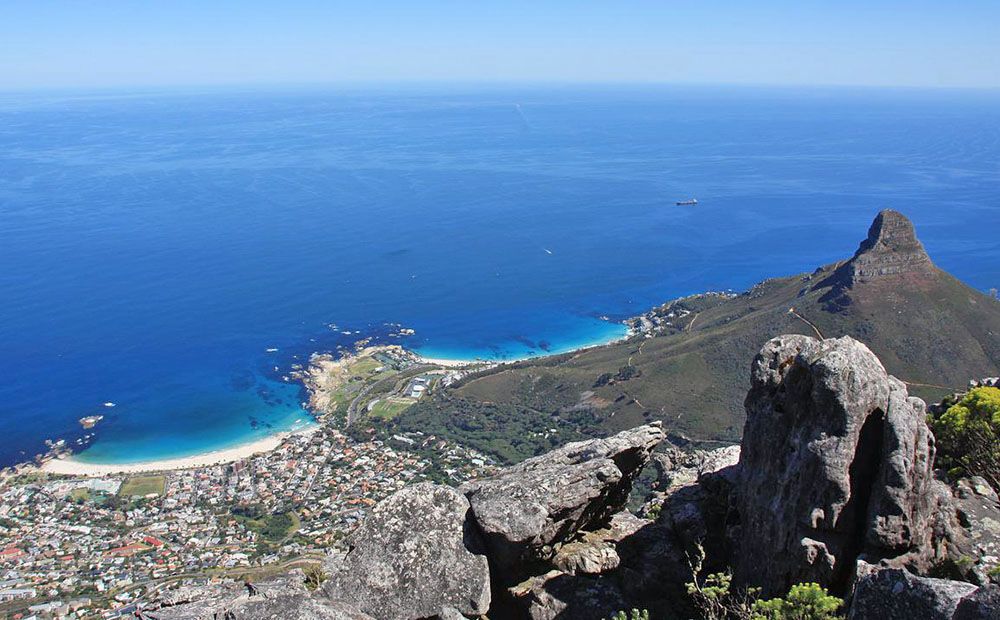
What to see and do just outside Cape Town
Cape Town has so much to offer that it is impossible to describe all the highlights. This applies to both the centre and the immediate surroundings of the city. Think of Table Mountain, Cape of Good Hope and the many, excellent wineries. And what about whale watching or hiking on the Cape Peninsula? Or a guided tour through one of the townships. And of course a visit to the infamous Robben Island. You can read more about it in our separate blog about activities outside Cape Town.
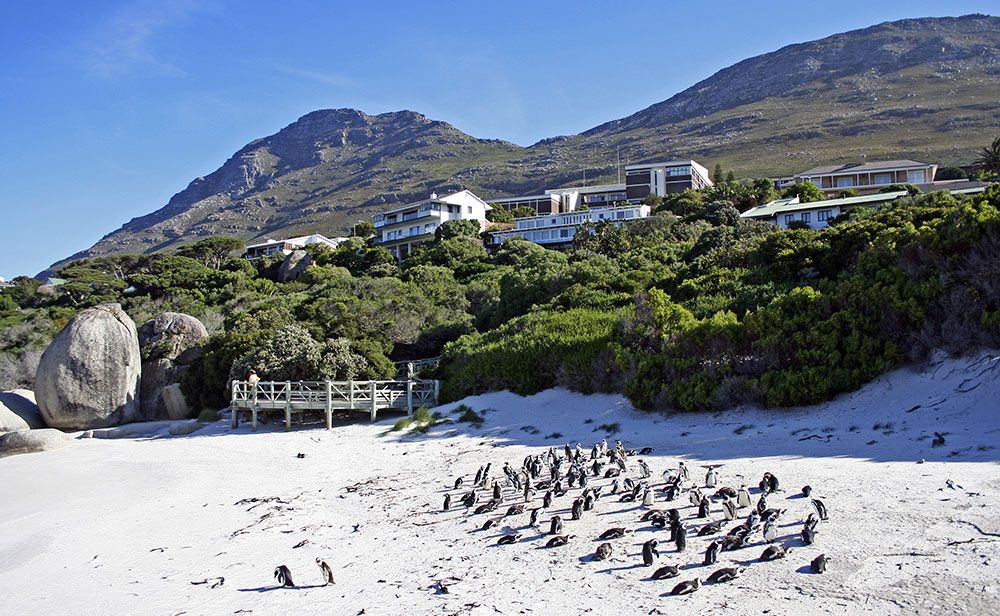
Answers to frequently asked practical questions about visiting Cape Town
The spring months of October and November are generally very pleasant. It is usually pleasantly warm during the day with relatively little precipitation. And the prices of accommodation, tours and dining are (naturally) lower than in summer. The summer months of December and January are very pleasant in terms of temperature. But it is busier and therefore more expensive. Perhaps the most ideal month for a visit to Cape Town is February. Wonderful warmth with beautiful blue skies. And quieter than in their summer.
As a metropolis, Cape Town is less safe than many medium-sized cities in Europe. But it is safer than the big cities in, for instance, Central or South America. What applies to the latter cities also applies to Cape Town: use your common sense. Do not be an obvious tourist. Leave as many valuables as possible in the safe of your accommodation. And seek out the busier districts and streets. In the evening, take a taxi or Uber to get around.
Cape Town is not the most pedestrian-friendly city in the world. However, you can easily reach the city centre with the V&A Waterfront and some beach areas by foot. Another way to get around is by rental car. Not very convenient during rush hour, but outside these times it's a handy means of transportation. Especially if you want to discover the Cape Town area. Of all the other means of transport, we really only recommend the official taxis with meter, and Uber (or Bolt).
Cape Town offers a wide range of hotels, B&Bs and guesthouses. We stayed in a B&B: a lovely spacious villa with large rooms and a swimming pool. This type of accommodation is more likely to be found in the suburbs, where it is also quieter. Staying in the centre, on the other hand, also has an important advantage: here, you can reach many of the sights and restaurants on foot.
The food in Cape Town is generally of high quality. The wines are very popular, but the surrounding region is also an important supplier of fruit, meat and fresh fish.
At the touristy V&A Waterfront, you will find a wide range of restaurants. These tend to be busy and expensive. The area around Kloof St also has many cafés and restaurants, as does Long Street. An absolute must is also the area between Bo-Kaap and Groenpunt. It has good food and a great vibe.
There are many cosy terraces and cafés in Cape Town. For instance, at the touristy V&A Waterfront. But for a truly multi-ethnic nightlife experience, head to Long Street. This is the ideal place full of bars and restaurants if you want to end the day with a drink. You will find the trendy, "new" South Africa here.
Many tourists fly into Cape Town to take the famous Garden Route from there. This is one of the most beautiful car routes in South Africa. And that’s what we did. We stayed a short week in the city and its surroundings. In retrospect, we found that far too short. We therefore recommend planning for at least a week for Cape Town and its immediate surroundings.

